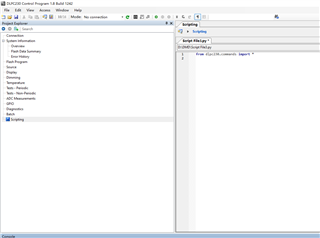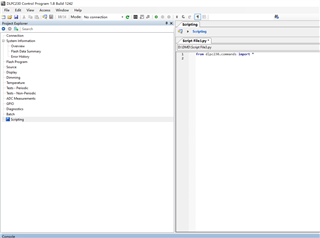Other Parts Discussed in Thread: DLPC230-Q1
Now I can show any preset light type and video through it, but how to realize adaptive lighting?
Is it through the script function of the GUI software shown in the figure? If not, how should this script function be used, because it seems that it does not have the packages commonly used in Python



